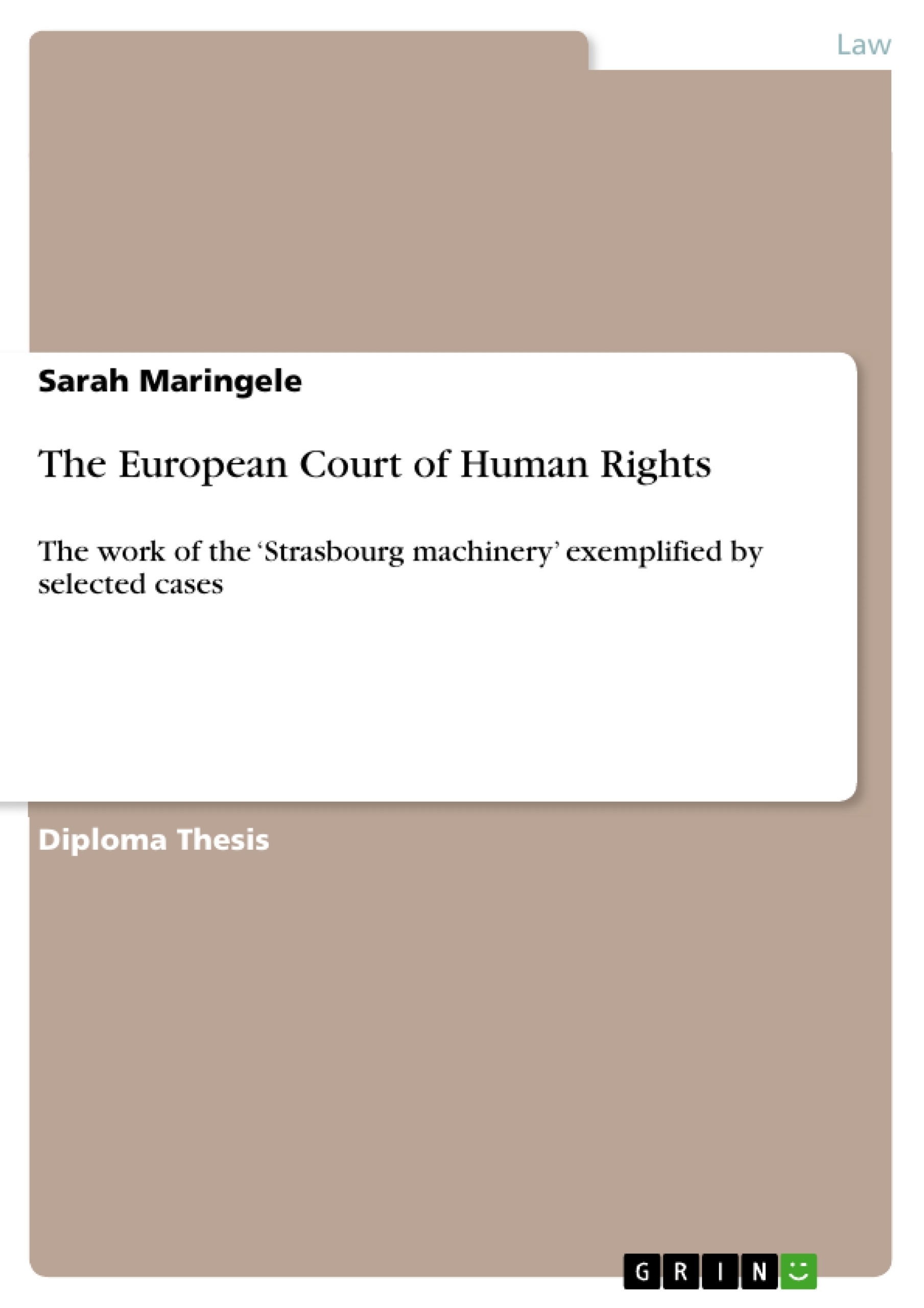Preface
December 1948 is a remarkable date in the history of human rights law. It was the birth of Human Rights Law. Without exception, human rights belong to every single human being. The eighth secretary General Ban Ki-moon clearly found an adequate description to illustrate the significance of human rights while giving a speech at the 2011 Human Rights Day. Besides the significance of
their existence he focused on their constant development and practicable usage which requires all the nations to exercise human rights. His speech can be put in one significant sentence. “But unless we know them, unless we demand they be respected, and unless we defend our right -- and the right of others -- to exercise them, they will be just words in a decades-old document.”
So this led to a few questions:
Now, as we happen to have Human Rights Law in Europe what are the consequences regarding the jurisprudence and the legal practice in general? Further on, what are the judicial consequences in respect of violence against women?
How about the acquaintance within European courts especially the European Court of Human Rights Law?
Did it remain the same or are remarkable changes and developments observable?
Did the development in Europe force ‘us’ to accommodate the understanding and meaning of what was once essential but in a completely different way?
The main focus within this work basis on the case-law of the ECtHR in order to reveal the process, development, changes and reasonings of the Court, specifically in respect of the application of the principles of interpretation.
The case analyze will cover general state of affairs, e.g.: environmental
issues, gender based circumstances, press related matters, physical and psychological violence in general, etc. Moreover, regarding violence, a few cases in Section Five shall illustrate the judicial approach relating to violence against women in specific; especially, since the latest violent incidents in 2013, for example in India South-America but also in Eastern Europe, revealed that violence against women is a disastrous, unsolved and widespread matter.
Inhaltsverzeichnis (Table of Contents)
-
Einleitung (Introduction)
-
Das Europäische Übereinkommen zum Schutze der Menschenrechte und Grundfreiheiten (ECHR) (The European Convention for the Protection of Human Rights and Fundamental Freedoms (ECHR))
-
Die Entstehungsgeschichte des ECHR (The History of the ECHR)
-
Die Struktur des ECHR (The Structure of the ECHR)
-
Der Anwendungsbereich des ECHR (The Scope of the ECHR)
-
-
Der Europäische Gerichtshof für Menschenrechte (EGMR) (The European Court of Human Rights (ECtHR))
-
Die Funktionsweise des EGMR (The Functioning of the ECtHR)
-
Die Rechtssprechung des EGMR (The Jurisprudence of the ECtHR)
-
-
Ausgewählte Fälle des EGMR (Selected Cases of the ECtHR)
-
Fall 1: … (Case 1: …)
-
Fall 2: … (Case 2: …)
-
Fall 3: … (Case 3: …)
-
-
Schlussfolgerung (Conclusion)
Zielsetzung und Themenschwerpunkte (Objectives and Key Themes)
This thesis aims to provide an in-depth analysis of the European Court of Human Rights (ECtHR) and its role in protecting human rights. It explores the workings of the 'Strasbourg machinery' through the examination of selected cases.
- The origins and development of the European Convention for the Protection of Human Rights and Fundamental Freedoms (ECHR)
- The structure and application of the ECHR
- The function and jurisprudence of the ECtHR
- Analysis of selected cases illustrating the ECtHR's impact on human rights protection
- The significance of the ECtHR's jurisprudence for the enforcement of human rights in Europe
Zusammenfassung der Kapitel (Chapter Summaries)
The first chapter provides an overview of the European Convention for the Protection of Human Rights and Fundamental Freedoms (ECHR), tracing its history, structure, and scope of application. Chapter two delves into the European Court of Human Rights (ECtHR), examining its functioning and key areas of jurisprudence. The following chapters explore specific ECtHR cases, analyzing their implications for human rights protection. The conclusion summarizes the findings and discusses the broader significance of the ECtHR for the European legal system.
Schlüsselwörter (Keywords)
This work focuses on key concepts such as the European Convention on Human Rights, the European Court of Human Rights, human rights protection, jurisprudence, case law, and the 'Strasbourg machinery'. The analysis examines specific cases to illuminate the impact of the ECtHR on the enforcement of human rights within the European context.
- Citation du texte
- Sarah Maringele (Auteur), 2014, The European Court of Human Rights, Munich, GRIN Verlag, https://www.grin.com/document/267583



